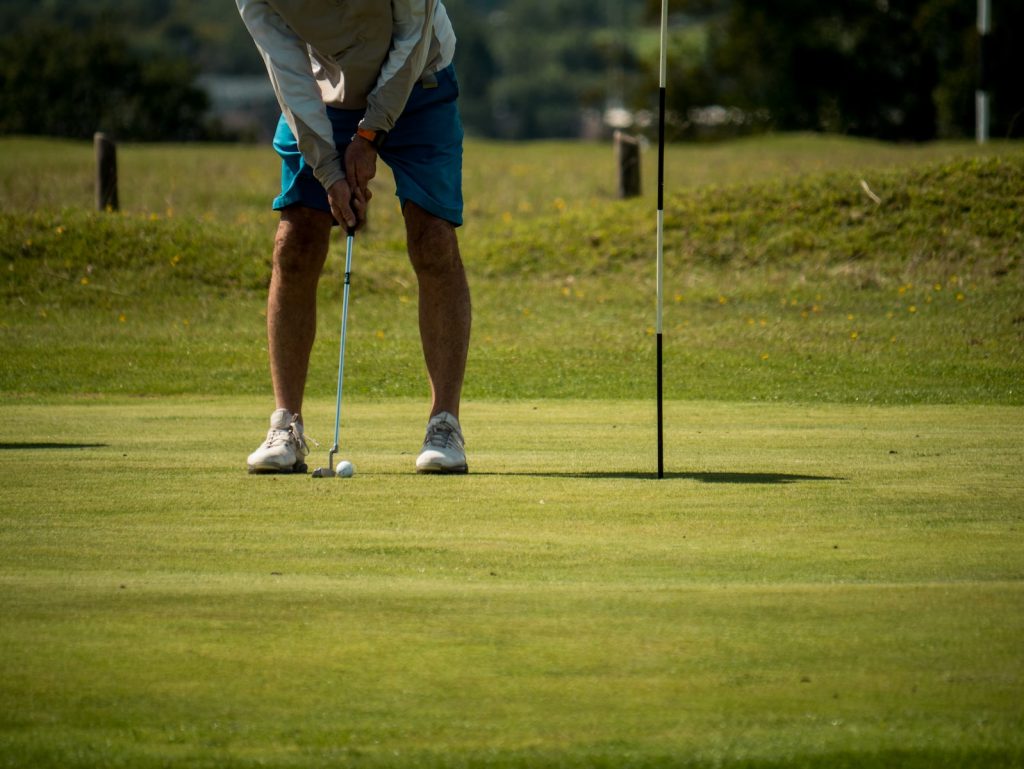Chipping is a crucial part of golf that can significantly affect your score. It acts as the bridge between putting and the longer shots, aiding in navigating around the greens efficiently. Knowing how to chip in golf is the culimination of three components: setup, swing and practice.
For beginners, mastering this skill can initially seem daunting, yet with the right guidance, it’s an achievable feat. This article elucidates the fundamentals of chipping in a digestible manner, aiming to transform novices into adept golfers around the greens.
Setting up a Powerful Chip

The setup is the precursor to a successful chip shot. This is where you create the ideal conditions for your swing, ensuring the trajectory of the ball aligns with your target.
The setup is not just about positioning; it’s about making informed decisions based on the lie of the ball, the terrain, and the distance to the hole.
Here, we delve into the essence of selecting the apt club and addressing the ball with precision. Both these elements are intertwined, setting the stage for a flawless execution.
The Club Choice Conundrum
The first step towards an effective chip is selecting the appropriate club. Traditionally, a pitching or sand wedge is employed for this task, but you can also use a less lofted club like a 7 or 8 iron if the situation warrants.
To determine the best wedge for you, check out our favorite wedges. If an iron better suits your style, you can find our top-performing irons.
Overall, the choice largely depends on the distance and the amount of green you have to work with. A good rule of thumb is to choose a club that allows the ball to fly only a third of the way to the hole and roll the rest.
Positioning for Precision
Proper stance and ball position are paramount for a precise chip. Position your feet close together with the ball placed towards the back of your stance.
Your weight should lean slightly towards the target, promoting a downward strike which is essential for a good chip. Additionally, ensure your hands are ahead of the ball at address to encourage a clean, crisp contact.
Mastering the Swing

The swing is the crux of the chip shot, a moment where technique meets intuition. It’s the embodiment of control, rhythm, and precision, orchestrated to propel the ball towards the intended target.
The swing in chipping is a nuanced motion, requiring a blend of finesse and strength. Unlike the powerful swings for longer shots, the chipping swing is about controlled energy transfer.
In this section, we dissect the mechanics of the backswing, downswing, and follow-through, uncovering the intricacies that contribute to a textbook chip shot. Through understanding the swing’s anatomy, you unveil the roadmap to executing a chip shot that lands gracefully on the green, inching closer to the hole with each roll.
Backswing and Downswing
For a successful chip shot, a simple, controlled swing is key. During the backswing, maintain a firm wrist while taking the club back to about knee height.
On the downswing, let your arms lead while your wrists remain firm, striking the ball with a descending blow. The length of the backswing will dictate the distance the ball travels, so adjust accordingly to the situation at hand.
Follow Through
The follow-through in a chip shot is as vital as the swing itself. It should be a smooth continuation of the downswing, with your club finishing towards the target.
A proper follow-through ensures that the club travels along the correct path, promoting accuracy and consistency in your chipping.
How to Practice Your Chip in Golf

Practice is the cornerstone of mastering chipping. It’s about repeating the right techniques until they become second nature.
In this segment, we’ll explore routine drills and the importance of analyzing and adjusting your technique, paving the way toward becoming proficient in chipping.
Routine Drills
Practicing chipping drills can significantly enhance your skills. Simple drills like the “circle drill” where you chip balls from different angles to a hole, aiming to get them within a three-foot circle, can be invaluable.
Additionally, practice varying your club selection and distance control to get a feel for different chipping scenarios.
Analyzing and Adjusting
Receiving feedback and making necessary adjustments is crucial for improvement. Utilize video analysis tools or professional coaching to understand the nuances of your chipping technique.
By dissecting your performance and rectifying errors, you’ll be on the fast track to mastering the art of chipping.
Wrapping up How to Chip in Golf for Beginners
Chipping is an art that requires a blend of the right technique and ample practice. By paying heed to the setup, swing mechanics, and engaging in deliberate practice, beginners can significantly enhance their chipping prowess, paving the way for lower scores and a more enjoyable golfing experience.


